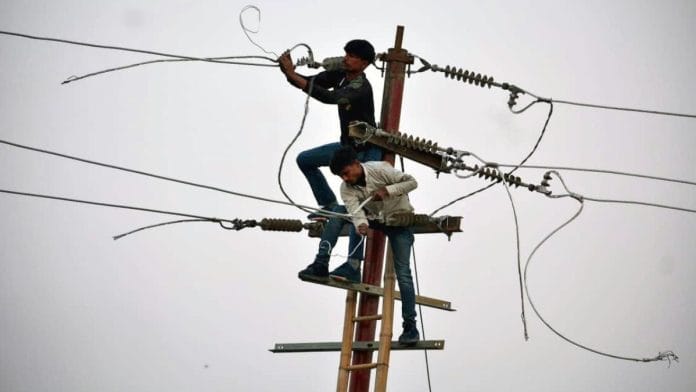A recent story highlighted the woes of the electricity sector in Pakistan. Large-scale exit of the high-paying customers—typically businesses—from the grid has made it unviable. While we often think that we are different, the reality is that the likelihood of such a scenario in India is not zero. We need to urgently engage in structural reform of our electricity sector to be able to power our growth aspirations.
Electricity for C&I consumers
That electricity is highly subsidised is well-known. What is, perhaps, less understood is the extent of cross-subsidy between commercial and industrial (C&I) and domestic users. For example, domestic (or residential) users now pay between Rs 4.8 and Rs 6.45 per kWh of electricity consumed in Tamil Nadu. The C&I consumers pay around Rs 8 per kWh plus fixed charges.
In Maharashtra (outside of Mumbai), residential users pay between Rs 8.9 and Rs 9.5 per kWh, while C&I users pay approximately Rs 9 to Rs 15 per kWh.
It is safe to assume that the difference between domestic and C&I consumers is between Rs 1 and Rs 7 per kWh across different states. The more domestic consumption is subsidised, the greater the burden on C&I consumers. Furthermore, power procured from distribution companies can be inconsistent—many regions still suffer from power cuts and voltage fluctuations. These are much more damaging and costly for C&I consumers.
Given the high prices and relatively poor quality, C&I consumers choose to exit the system.
Once they do, they set up their own captive plants (thermal and renewable) to provide the required power. When they are able to source storage technology for renewable-based captive plants, their exit from the electricity utilities is complete. They also have the option to buy power from third-party producers. This requires using transmission networks and interfacing with distribution companies, so it is not a complete exit.
As of 2023, the installed captive capacity is approximately 79,000 MW. This is about 19 per cent of the total installed capacity in India.
This number has grown rapidly since 2018, when the captive capacity was around 55,000 MW. While a large percentage of this capacity is thermal, there is growing interest in setting up hybrid renewable captive power plants.
Also read: Free electricity ruined discoms. Now they will cause trouble in transition to renewables
What happens when C&I exit
The impact of C&I exit is felt in three ways.
First, C&I consumers are high-paying customers. When they exit and build their own captive plants or buy power from independent producers, distribution companies lose a major source of revenue. Most distribution companies in India are already in financial difficulties and have accumulated large debts due to their inability to raise revenue or reduce costs. The loss of C&I consumers will make the financial problems of the distribution companies worse.
If distribution companies continue to make losses and accumulate debt, the remaining consumers—especially residential customers—will see more electricity shortages or poor quality of electricity supply. This will subsequently incentivise more C&I consumers to leave.
Second, C&I consumers have predictable demand. This, in turn, brings predictability to the grid. If they were to exit en-masse, this predictability would be lost, increasing the “load volatility” leading to downstream issues like voltage fluctuations for residential consumers.
Third, with C&I consumers’ exit, there remain fewer people utilising the grid. As a result, the cost of maintaining the grid falls on a smaller base of remaining low-paying consumers. Investments into the grid fall further, causing the downward spiral of the infrastructure.
One way distribution companies have retaliated is by making it more expensive to use the grid infrastructure in case of third-party purchases of power. This works by making the distribution companies’ tariffs competitive with open-access sources. However, it is ineffective in keeping the largest C&I customers with the system, as they can just set up their own captive plants. And often, even if tariffs are competitive, the problems with quality and certainty of power may still cause C&I consumers to purchase from third parties.
Also read: Politics is holding back power sector reforms. It only brings financial pain
Electricity reforms
Will India face the same situation as Pakistan? We don’t know for sure, and the answer is likely to vary from state to state. But the condition there paints a picture of what can happen if Indian distribution companies do not get their act together.
Can the threat of further exit of C&I finally provide the impetus for reforming the electricity sector? If the electricity provided by distribution companies has to be competitive, then both the price and the quality have to be attractive. Scaling back cross-subsidies and increasing the pricing for the domestic sector and agriculture will be a start.
The financial sustainability of distribution companies is the first step toward improvements and investments in infrastructure. There is a lot of knowledge in the Indian ecosystem on how to bring about structural reform of the electricity sector—we should harness it.
Renuka Sane is managing director at TrustBridge, which works on improving the rule of law for better economic outcomes for India. She tweets @resanering. Views are personal.
(Edited by Theres Sudeep)






